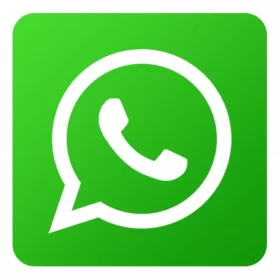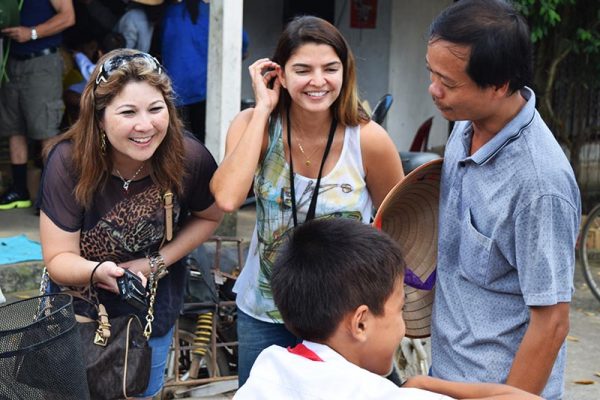
Do you have misconceptions about Vietnam?
Discover the most common misconceptions about Vietnam, from safety and food to infrastructure and culture. Get the facts before your trip!
I. Introduction
Vietnam, a country with a rich history, diverse culture, and breathtaking landscapes, has become an increasingly popular destination for travelers worldwide. However, many international tourists still hold misconceptions about Vietnam before visiting.
These misunderstandings can range from outdated perceptions of the country’s infrastructure to false assumptions about safety, culture, and even the food. Such preconceived notions often stem from a lack of updated information or reliance on historical narratives that no longer reflect the reality of modern Vietnam.
The aim of this article is to clarify the most common misunderstandings about Vietnam and provide accurate, up-to-date insights. By addressing these misconceptions, we hope to give travelers a more informed perspective on what to expect when visiting this dynamic and welcoming country.
II. Top 8 Misconceptions About Vietnam
1. Vietnam is Just a War-Torn Country
For many travelers, Vietnam’s history, especially its association with the Vietnam War, often leads to the assumption that it’s a country still recovering from conflict. However, this is far from the truth.
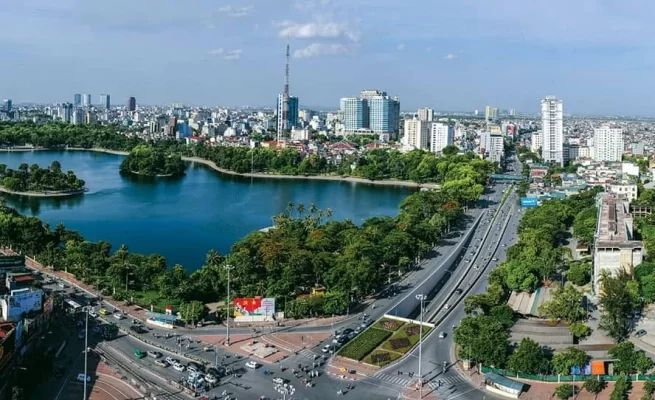
Vietnam is developing strongly and making friends with every country in the world.
Vietnam today is a peaceful and rapidly developing nation, with advancements in its economy, culture, and tourism. The war is part of Vietnam’s past, but the country has moved forward, focusing on progress and welcoming millions of visitors each year. Its bustling cities, diverse landscapes, and thriving industries showcase a modern, dynamic nation that is far more than its history of conflict.
Vietnam boasts a variety of stunning tourist destinations, each with unique offerings for visitors.
- Halong Bay, a UNESCO World Heritage Site, is famous for its breathtaking limestone karsts rising from emerald waters, ideal for cruises and sightseeing.
- Hoi An, an ancient town known for its well-preserved architecture, is a blend of history and charm with lantern-lit streets and vibrant markets.
- Sapa, located in the northern highlands, is famed for its terraced rice fields and rich cultural diversity, home to various ethnic minorities.
- The modern cities of Hanoi and Ho Chi Minh City (formerly Saigon) are vibrant hubs of culture and commerce, offering everything from historical landmarks to cutting-edge entertainment.
Read more: Best Vietnam Travel Guide
2. Vietnam is Unsafe for Tourists
Contrary to popular belief, Vietnam is actually one of the safest destinations for tourists, with a relatively low crime rate compared to many other countries. The government places a high priority on maintaining public safety, particularly in areas frequented by international visitors. Violent crime against tourists is rare, and most visitors find their experience in the country to be peaceful and enjoyable. The bustling cities, serene rural areas, and even remote regions are generally safe to explore.
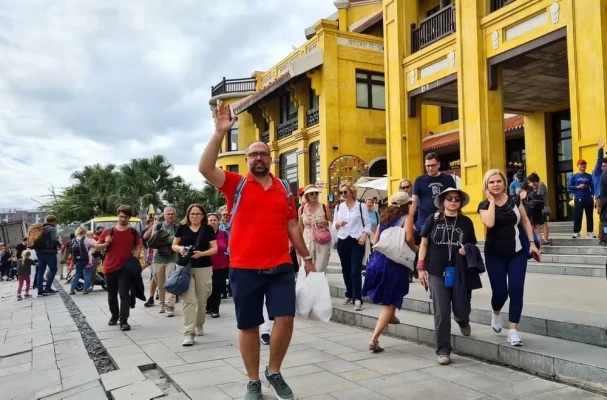
Vietnam is one of the safest countries for tourists.
Recently, the British magazine Time Out published a list of “9 safest destinations in the world for female solo travelers”, including Vietnam. Time Out magazine wrote: “When it comes to the safest destinations for women traveling alone in Southeast Asia, Thailand and Vietnam are always the top two destinations, but Vietnam is still a better start.”
It’s true that female travelers visiting Vietnam will never encounter strange looks from men on the streets. They can feel free to go out late at night and find help anywhere they need, thanks to the hospitality of the Vietnamese people.
Do not miss: Vietnam Family Tour
3. Vietnamese People Don’t Speak English
Another common misconception about Vietnam is that locals don’t speak English, making communication difficult for tourists. While it is true that Vietnamese is the official language and older generations may not be fluent in English, this stereotype does not hold up in many parts of the country today.
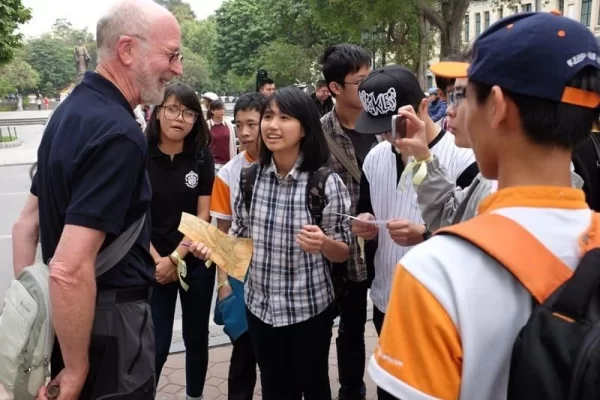
Tourists can easily communicate in English when traveling to Vietnam.
In major tourist destinations like Hanoi, Ho Chi Minh City, and Da Nang… English proficiency is quite widespread, especially among younger people and those working in the tourism and hospitality industries. In these areas, you will find that hotel staff, tour guides, and even many shop owners can communicate effectively in English.
Popular tourist spots like Hoi An and Halong Bay are also well-equipped with English-speaking personnel to assist travelers. Vietnam has seen a significant push towards English language education, making it a mandatory subject in schools. As a result, younger generations in urban centers are becoming increasingly comfortable speaking English.
4. Vietnam is a Rural Country Without Modern Infrastructure
One of the misconceptions about Vietnam is that it is a largely rural country lacking modern infrastructure. While it’s true that Vietnam has many beautiful rural areas with rice paddies and small villages, the country has rapidly modernized in recent decades, particularly in its major cities.
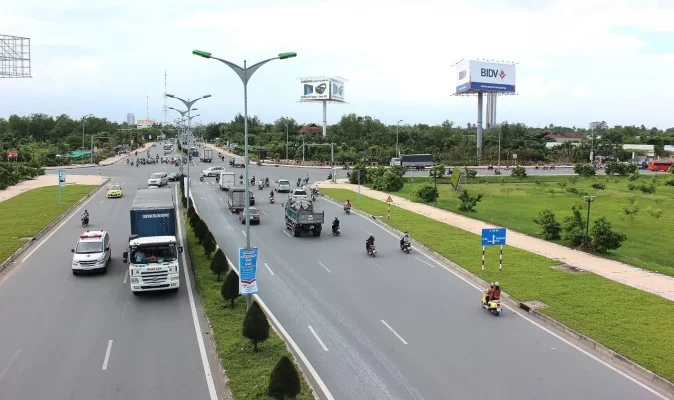
Vietnam develops with modern infrastructure.
Vietnam has made impressive strides in building a robust infrastructure system. Cities like Hanoi, Ho Chi Minh City, and Da Nang are home to towering skyscrapers, modern shopping malls, and an extensive network of highways. Vietnam’s urban centers have developed into bustling hubs of commerce, technology, and tourism, with infrastructure that rivals many Western countries.
In recent years, Vietnam has invested heavily in improving its infrastructure to accommodate its growing economy and increasing number of tourists. Major international airports such as Noi Bai in Hanoi, Tan Son Nhat in Ho Chi Minh City, and Da Nang International Airport now welcome millions of visitors each year with modern facilities that meet global standards. Additionally, major cities feature a variety of upscale hotels, resorts, and conference centers, proving that Vietnam has much more to offer than just its rural charm.
Read more: Traffic in Vietnam – Shocking Facts You Must Know
5. The Weather in Vietnam is Always Hot and Humid
One common misunderstanding among international tourists is that Vietnam’s weather is consistently hot and humid throughout the year. While it’s true that Vietnam has a tropical climate in certain areas, the weather actually varies significantly depending on the region and season.
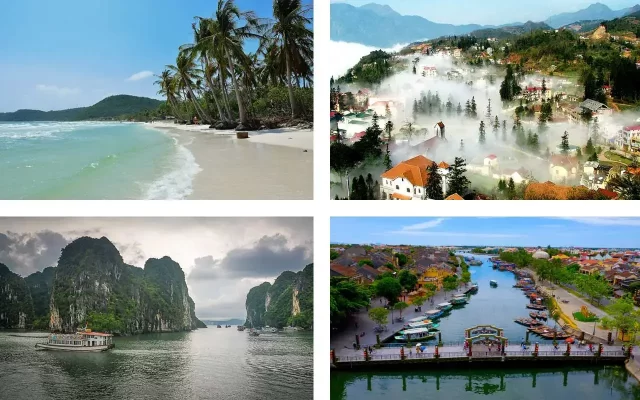
Vietnam’s climate is diverse and changes from north to south.
Vietnam stretches over 1,600 kilometers from north to south, crossing multiple climate zones. As a result, the country experiences a range of weather conditions, from cool winters to hot, humid summers. Each region—North, Central, and South—has its own distinct climate patterns that shift throughout the year.
Northern Vietnam (Hanoi and Surrounding Areas):
- In the northern part of the country, which includes Hanoi, the climate is subtropical. Here, you will find four distinct seasons. Winter, typically from November to February, can get quite cold, with temperatures dropping as low as 10°C (50°F), especially in December and January.
- Tourists visiting Hanoi in the winter are often surprised by the cool, misty conditions, which can even require a light jacket or sweater. Spring (March to April) and autumn (September to October) are generally mild and pleasant, making these ideal times to visit. Summer (May to August), however, can be hot and humid, with temperatures often exceeding 35°C (95°F) and occasional heavy rains.
Central Vietnam (Da Nang and Coastal Areas):
- The central region, including cities like Da Nang and Hue, experiences a tropical monsoon climate. The weather here is typically warm year-round, but the region has a clear, dry, and rainy season.
- From February to August, the central coast enjoys sunny weather, with temperatures ranging from 25°C to 35°C (77°F to 95°F), making it perfect for beachgoers. However, from September to January, this region faces its rainy season, with storms and typhoons sometimes affecting the coast.
- derate compared to the extreme heat of the northern summers.
Southern Vietnam (Ho Chi Minh City and the Mekong Delta):
- In contrast to the north, southern Vietnam has a tropical climate with two main seasons—wet and dry. The dry season, lasting from November to April, is the best time to visit cities like Ho Chi Minh City (formerly Saigon), where temperatures hover around 30°C (86°F).
- The rainy season, which typically runs from May to October, brings daily downpours, usually in the afternoon, but these are short-lived and don’t typically disrupt travel plans. Even during the rainy season, temperatures remain consistently warm, rarely dropping below 25°C (77°F).
See more: Best time to visit Vietnam
6. The Food is Only Spicy and Unfamiliar
Many tourists mistakenly believe that Vietnamese cuisine is overwhelmingly spicy and difficult to adjust to. However, this is far from the truth. While some dishes might have a hint of spice, Vietnamese food is known for its balance of flavors—sweet, salty, sour, and umami.
The cuisine offers a wide variety of options that cater to different tastes, ensuring that even those who are sensitive to spice can enjoy flavorful and delightful meals. Vietnamese food is crafted to please the palate, from comforting noodles soups to light, fresh rolls.
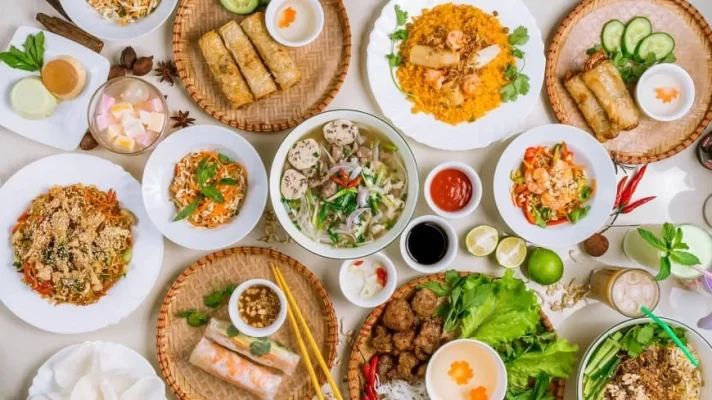
Vietnamese cuisine always surprises tourists.
𝐇𝐚𝐧𝐨𝐢 has excellently won the title of “𝐀𝐬𝐢𝐚’𝐬 𝐁𝐞𝐬𝐭 𝐂𝐮𝐥𝐢𝐧𝐚𝐫𝐲 𝐂𝐢𝐭𝐲.” The 𝑾𝒐𝒓𝒍𝒅 𝑪𝒖𝒍𝒊𝒏𝒂𝒓𝒚 𝑨𝒘𝒂𝒓𝒅𝒔 is a global initiative that honors outstanding achievements in the culinary industry. The results are a compilation of votes from experts and the public over the course of a year. In the category of “Asia’s Best Culinary City Destination 2024,” 𝑯𝒂𝒏𝒐𝒊 outshone other nominees such as Bangkok, Seoul, and Tokyo to claim the top spot.
Vietnamese cuisine features several iconic dishes that have become favorites among travelers from around the world.
- Phở: This is perhaps the most well-known Vietnamese dish globally. A fragrant and light broth made from beef or chicken bones is simmered for hours with spices like star anise and cinnamon, then served with flat rice noodles, herbs, and your choice of meat (typically beef or chicken). The taste is mild yet deeply satisfying, and diners can adjust the spice level with chili sauces and lime, allowing them to enjoy the dish at their own comfort level.
- Bún Chả: A Hanoi specialty, bún chả consists of grilled pork patties and sliced pork belly served with vermicelli noodles, a basket of fresh herbs, and a tangy dipping sauce made of fish sauce, vinegar, sugar, and garlic. This dish is typically accompanied by pickled vegetables and, while flavorful, is not inherently spicy unless the diner chooses to add chili.
- Spring Rolls: These fresh spring rolls are light, healthy, and full of flavor. Made with rice paper, they are typically filled with shrimp, pork, vermicelli noodles, and herbs, served with a peanut-hoisin dipping sauce. This dish is a perfect example of how Vietnamese food emphasizes fresh, clean flavors rather than relying on spiciness.
Start your journey with: Unforgettable Cross-Vietnam Tour in 11 Days
7. Vietnam is Difficult to Travel Around
Vietnam has a well-developed and accessible transportation system, making it easy to travel between cities and explore various regions. Whether you’re traveling from north to south or visiting coastal and mountainous areas, there are multiple reliable options to suit your travel needs.
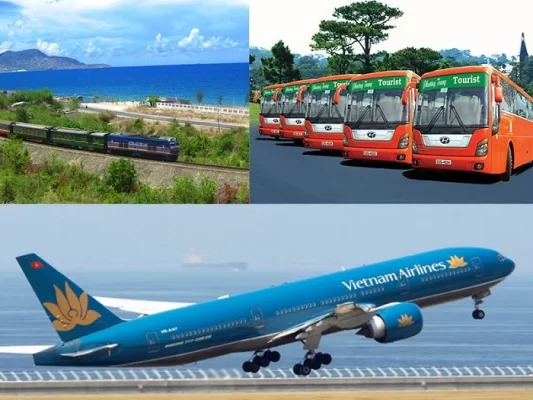
Developed infrastructure and transportation make it easy for tourists to travel in Vietnam.
Vietnam’s domestic flight network is extensive and efficient, with several airports scattered across the country. Major cities like Hanoi, Ho Chi Minh City, and Da Nang are connected by frequent flights operated by airlines such as Vietnam Airlines, Bamboo Airways, and VietJet Air. These flights are relatively affordable and offer a quick way to cover long distances, allowing you to explore diverse landscapes without spending too much time on the road.
For example, it only takes about 2 hours to fly from Hanoi to Ho Chi Minh City, compared to a much longer train or bus journey. Domestic flights also serve smaller regional airports, making destinations like Phu Quoc Island, Da Lat, and Con Dao easily accessible.
Train System:
- Vietnam boasts an extensive railway system, which provides a scenic and comfortable way to travel, especially for those looking to experience the country’s natural beauty at a slower pace. The most well-known route is the Reunification Express, running from Hanoi to Ho Chi Minh City, which passes through stunning coastal landscapes, lush countryside, and vibrant towns.
- Traveling by train offers various ticket classes, from affordable hard seats to air-conditioned soft sleepers, catering to different budgets and comfort preferences. Additionally, train travel in Vietnam is safe, relatively punctual, and a great option for overnight journeys, allowing travelers to wake up in a new city without the hassle of airports.
Long-Distance Buses:
- For budget-conscious travelers or those preferring to explore areas not served by trains, Vietnam’s long-distance bus network is both reliable and economical. Numerous companies, such as Phuong Trang and Mai Linh, operate modern buses with air conditioning and reclining seats, offering services between major cities and even more remote locations.
- Sleeper buses, in particular, are popular for overnight routes, providing a practical way to cover large distances while resting. Bus travel also allows more flexibility in itineraries, as buses can often reach smaller towns and destinations that might not be accessible by train or plane.
Click here: Vietnam Tour Package 14 Days
8. Vietnam is a Cheap and Low-Quality Destination
Unlike most people think that Vietnam is a destination only suitable for budget travelers, the country offers a wide range of travel experiences that cater to all types of tourists—from backpackers to those seeking high-end luxury.
While Vietnam is known for being an affordable destination, especially for those on a tight budget, it also boasts world-class resorts, luxurious accommodations, and premium travel experiences that rival any other upscale destination globally.
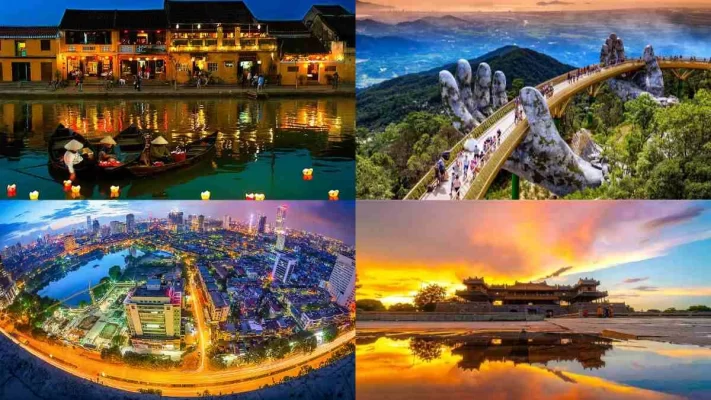
Vietnam offers a wide range of travel options with costs ranging from low to high.
Vietnam has firmly established itself as a premier destination for luxury travel, with five-star hotels, private villas, and high-end resorts spread across its stunning coastlines and vibrant cities. Many of these resorts are nestled in picturesque locations like Phu Quoc Island, Da Nang, and Nha Trang, where guests can enjoy private beaches, infinity pools, spa treatments, and gourmet dining.
For example, international hotel brands such as Amanoi Resort, InterContinental Danang Sun Peninsula Resort, and The Reverie Saigon deliver exclusive and personalized services that appeal to discerning travelers.
More details: Discover a Round of Vietnam from South to North in 12 Days
III. Conclusion: Discover the Real Vietnam
In conclusion, Vietnam is a country rich in culture, history, and natural beauty that deserves to be experienced in its full complexity. While there may be common misconceptions that paint a narrow or outdated picture of this vibrant nation, the reality is far more nuanced. From the bustling streets of Ho Chi Minh City to the serene landscapes of Ha Long Bay, Vietnam offers a diverse array of experiences that captivate and inspire.
We encourage you to embark on your journey to Vietnam with an open mind and a sense of adventure. Step beyond the stereotypes and embrace the opportunity to engage with the local culture, taste authentic Vietnamese dishes, and explore breathtaking landscapes. Whether you are wandering through the ancient streets of Hoi An, hiking in the lush terraced fields of Sapa, or savoring the street food in Hanoi, every experience will enrich your understanding of this remarkable country.
Read more: Vietnam Overview

